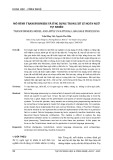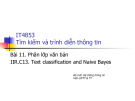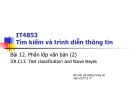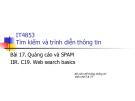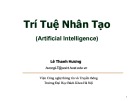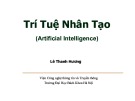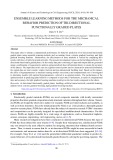
Journal of Science and Transport Technology Vol. 2 No. 2, 13-21
Journal of Science and Transport Technology
Journal homepage: https://jstt.vn/index.php/en
JSTT 2022, 2 (2), 13-21
Published online 14/05/2022
Article info
Type of article:
Original research paper
DOI:
https://doi.org/10.58845/jstt.utt.2
022.en.2.2.13-21
Corresponding author:
E-mail address:
derrible@uic.edu
Received: 24/01/2022
Revised: 09/05/2022
Accepted: 11/05/2022
Predicting Bike-Sharing Demand Using
Random Forest
Thu-Tinh Thi Ngo1, Hue Thi Pham1, Juan Acosta2, Sybil Derrible2,*
1University of Transport Technology, Hanoi 100000, Vietnam
2University of Illinois at Chicago, Chicago, Illinois, United States
Abstract: Being able to accurately predict bike-sharing demand is important
for Intelligent Transport Systems and traveler information systems. These
challenges have been addressed in a number of cities worldwide. This article
uses Random Forest (RF) and k-fold cross-validation to predict the hourly
count of rental bikes (cnt/h) in the city of Seoul (Korea) using information
related to rental hour, temperature, humidity, wind speed, visibility, dewpoint,
solar radiation, snowfall, and rainfall. The performance of the proposed RF
model is evaluated using three statistical measurements: root mean squared
error (RMSE), mean absolute error (MAE), and correlation coefficient (R). The
results show that the RF model has high predictive accuracy with an RMSE of
210 cnt/h, an MAE of 121 cnt/h, and an R of 0.90. The performance of the RF
model is also compared with a linear regression model and shows superior
accuracy.
Keywords: Bike-sharing demand; travel demand forecasting; machine
learning; Random Forest.
1. Introduction
The challenges of climate change, global
automation, and resource depletion are affecting
every nation on the planet, and they are becoming
more and more serious, especially for transport
systems [1]. In response, governments and
authorities are constantly implementing measures
to develop more sustainable and resilient transport
systems, including clean fuel, electric vehicles,
strict regulations of the demand for private vehicle
ownership, and the development of efficient public
transport systems [2]. Bike-sharing systems are
one of the measures that have been adopted to
address these challenges [3].
The principle of a bike-sharing system is
straightforward. People pay a fee to rent a bike for
a short time period. This system is convenient
because users can comfortably use it to move
around without owning a bicycle, providing health
benefits while paying only a small amount of
money. In addition, the use of bike-sharing
services also brings significant benefits such as
greenhouse emissions reduction, zero fuel
consumption, congestion reduction, physical
exercise (public health), and an increase
awareness about the environment [4].
Early bike-sharing systems were invented
around 1960. By 2022, they had primarily
developed into three models [5]: (a) free bike
system, (b) deposit bike rental system with private
parking, and (c) bike-sharing system using location
technology. The third one often goes along with
larger deposits and requests to provide user
information in order to overcome the





